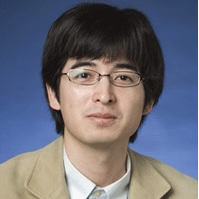Non-Destructive Characterization and Processing of Composite Materials
A special issue of Journal of Composites Science (ISSN 2504-477X). This special issue belongs to the section "Composites Modelling and Characterization".
Deadline for manuscript submissions: closed (30 November 2021) | Viewed by 13853
Special Issue Editor
Interests: mineral processing; recycling; colloid and interface science
Special Issues, Collections and Topics in MDPI journals
Special Issue Information
Dear Colleagues,
This Special Issue aims to provide a good forum for scientists and engineers to share and discuss their pioneering original findings or insightful reviews on the characterization of composite materials. Reports on non-destructive characterization research towards process enhancement and the development/application of an advanced characterization method are particularly welcome.
The proper characterization of heterogeneous composite materials is still a challenging task, since the majority of characterization methods often require the size reduction and dissolution of a material that average the whole material and could overlook potential issues associated with spatially heterogeneous materials and values associated with fine grains (e.g., [1]).
Some potential contributions are listed below under “Topics”. One of them can be the characterization of industrial wastes for understanding the spatial distribution and liberation/association of key components in order to develop a recycling flowsheet. This correlation was found to be useful in many different respects, while there remain so many research gaps that have been identified. At the same time, better understanding heterogeneous composite materials is of great importance from scientific and engineering points of view, since the processing and production/application of composite materials are vital of our modern society, including raw materials (e.g., complex ores) and advanced technologies (e.g., batteries, printed circuit boards, [2-5]).
References
[1] A. Otsuki, Y. Chen, Y. Zhao, 2014. J. Soc. Mat. Eng. Res. 20(2) 126-135.
[2] Otsuki, A.; Gonçalves, P.P.; Stieghorst, C.; Révay, Z. Non-Destructive Characterization of Mechanically Processed Waste Printed Circuit Boards: X-ray Fluorescence Spectroscopy and Prompt Gamma Activation Analysis. J. Compos. Sci. 2019, 3, 54.
[3] Otsuki, A.; Pereira Gonçalves, P.; Leroy, E. Selective Milling and Elemental Assay of Printed Circuit Board Particles for Their Recycling Purpose. Metals 2019, 9, 899.
[4] Pereira Gonçalves, P.; Otsuki, A. Determination of Liberation Degree of Mechanically Processed Waste Printed Circuit Boards by Using the Digital Microscope and SEM-EDS Analysis. Electronics 2019, 8, 1202.
[5] Otsuki, A.; De La Mensbruge, L.; King, A.; Serranti, S.; Fiore, L.; Bonifazi, G. Non-destructive liberation analysis of mechanically processed waste printed circuits boards, Waste Management, 2020, 102, 510-519.
Topics
-Characterization
- In-situ measurement (e.g., rheo-SANS, rheo-SAXS, rheo-NMR)
- Neutrons, X-rays
- Operando measurement
- Imaging (e.g., SEM, TEM, tomography/radiography)
- Surface analysis (e.g., AFM, STM, XPS, XAFS, reflectometry, mass spectrometry)
- Suspension rheology
- Physical/physico-chemical properties (e.g., particle surface charge, particle size, wetting, specific surface area, porosity)
-Physical chemistry
- Heterogeneity
- Concentrated colloidal suspension
- Colloidal forces (e.g., DLVO forces, non-DLVO forces)
- Chemical environment (e.g., salt/electrolyte, surfactant, pH)
-Process and functional materials
- Industrial wastes
- Complex ores
- Mechanical processes (e.g., thickening/sedimentation, filtration, agitation/mixing)
- Separation (e.g., flotation, magnetic separation)
- Functional material synthesis and its characterization
-Fluid dynamics and applied mechanics
- Particle-laden flow
- Flow diagnosis
- Flow visualization (e.g., MRI velocimetry)
- Flow behavior under external field application (e.g., mechanical agitation, electric field application)
- Non-Newtonian fluid
- Complex fluid
Thank you very much!
Dr. Akira Otsuki
Guest Editor
Manuscript Submission Information
Manuscripts should be submitted online at www.mdpi.com by registering and logging in to this website. Once you are registered, click here to go to the submission form. Manuscripts can be submitted until the deadline. All submissions that pass pre-check are peer-reviewed. Accepted papers will be published continuously in the journal (as soon as accepted) and will be listed together on the special issue website. Research articles, review articles as well as short communications are invited. For planned papers, a title and short abstract (about 100 words) can be sent to the Editorial Office for announcement on this website.
Submitted manuscripts should not have been published previously, nor be under consideration for publication elsewhere (except conference proceedings papers). All manuscripts are thoroughly refereed through a single-blind peer-review process. A guide for authors and other relevant information for submission of manuscripts is available on the Instructions for Authors page. Journal of Composites Science is an international peer-reviewed open access monthly journal published by MDPI.
Please visit the Instructions for Authors page before submitting a manuscript. The Article Processing Charge (APC) for publication in this open access journal is 1800 CHF (Swiss Francs). Submitted papers should be well formatted and use good English. Authors may use MDPI's English editing service prior to publication or during author revisions.
Keywords
- Physical chemistry
- Process and functional materials
- Flow dynamics
- Applied mechanics





